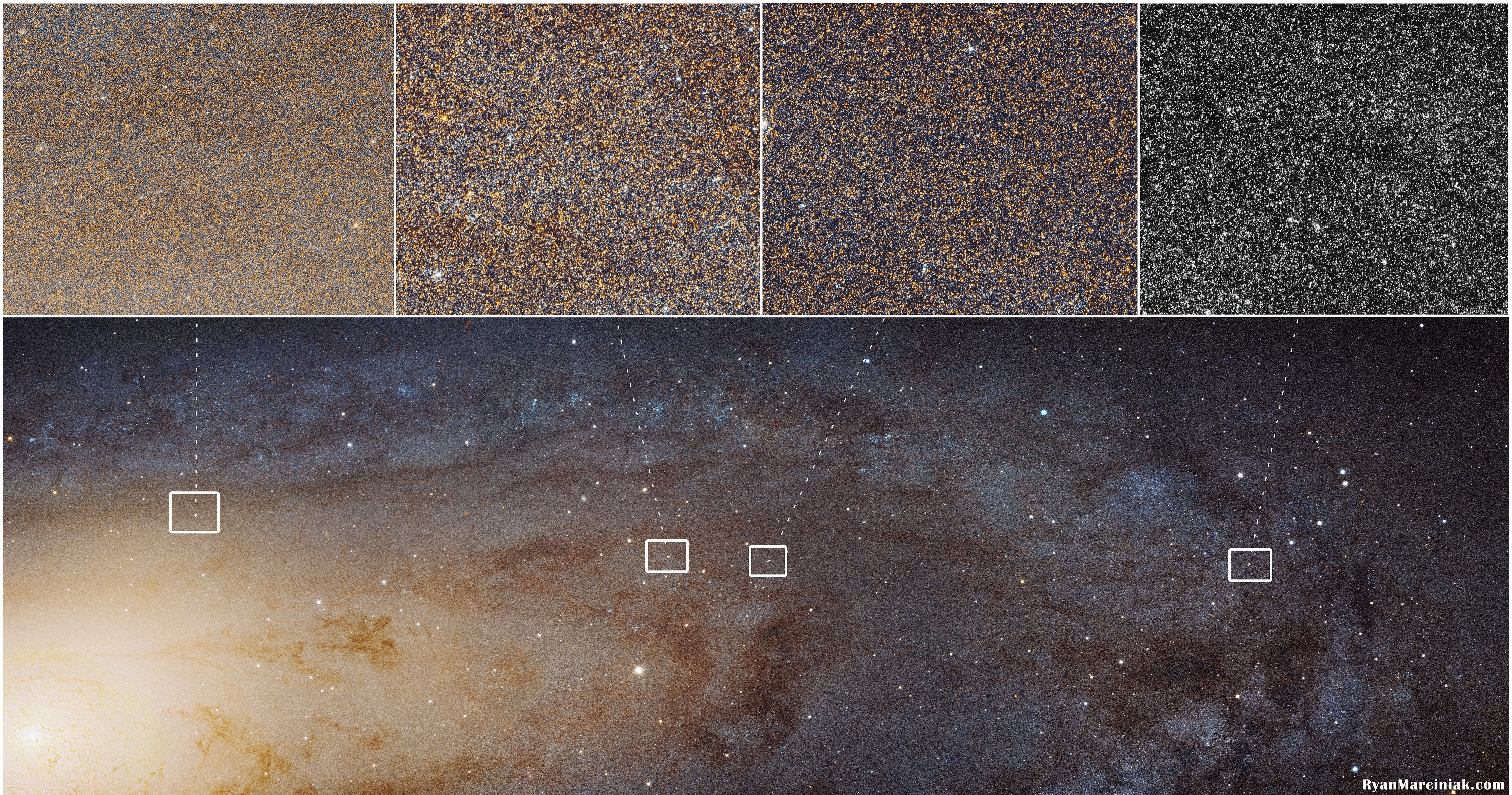When I became a Masters student, a big part of the reason I liked the supervisor I had was that she studied M31: The Andromeda Galaxy. Since I was young I was obsessed with finding this galaxy in a telescope, and I will never forget the night I first found it. Seeing that strange fuzzy patch, photons that had travelled for 2.5 Million years through space, it was my first ever experience with ‘time travel’.
Consequently, it makes sense that I am excited about a recent Hubble release: the highest resolution photo of the Andromeda Galaxy Ever taken. Let’s start with an already amazing shot of the Galaxy.

Andromeda is the closest large Galaxy to us. There are about a dozen small Galaxies nearby, but none compare to the size and full spiral structure of the Milky Way like Andromeda does. It may be larger than the Milky Way, containing upwards of 1 Trillion stars. With such an astronomical population of stars (pardon the pun), it’s natural that we as humans can’t really imagine how this cloud-like object is actually made of individual suns.
The new image, from the Hubble Space Telescope, gives us a real visual example showing how a galaxy is composed of individual stars. Here is the high resolution image, about 20 Mb in size:

If you clicked the picture above and saw the full size 20Mb image, you might notice that the picture has a slight grainy look to it. If we take a look at the zoom image I compiled, we can see why.
The grainy look is due to Millions of stars being resolved individually! We can finally see the true size and scale of the Andromeda Galaxy. Even stars near the outer edge of the Galaxy are at most 10 Light Years apart. Closer to the center, that gap closes and stars are packed even more tightly.
You might notice that as we move from right to left across the image, or from the edge of the Galaxy to the center, the stars become redder. This is exactly what is happening. Stars are born along the spiral arms farther out from the center, and as the galaxy rotates they migrate inward. Closer to the center, the stars are older, and since older stars are redder on average, we see a core of older, redder stars.
This is similar to taking a photograph of a person at such a high resolution that we could see their individual skin cells.
The full high resolution image of the galaxy taken by Hubble is 4.3 Gb in size! It likely contains 100 Million stars within the single image. I won’t be able to post the full version without breaking the blog, but I did use the full size image when producing my zoomed image above, so you can see just how incredibly high the resolution is. In some parts of the image, you can even see more distant galaxies that are behind the Andromeda Galaxy. In essence we are seeing straight through M31.
This image is in a category with images like the ‘Pale Blue Dot’ and the ‘Pillars of Creation,’ because it gives us perspective on how small we are and how wondrous the Universe is. If you feel so inclined, download the full size image and just play around by zooming in and seeing the structures in fine detail. You may spend several hours on it, like I did.
We live in a wonderful time, where imaging has granted us the ability to see beyond what our eyes can, even with a telescope. It reminds me to be grateful for the amazing technology we have access to. I can only imagine what the future may bring.


Amazing Post. I have always loved star exploration. Wish I looked at the sky more as a kid.